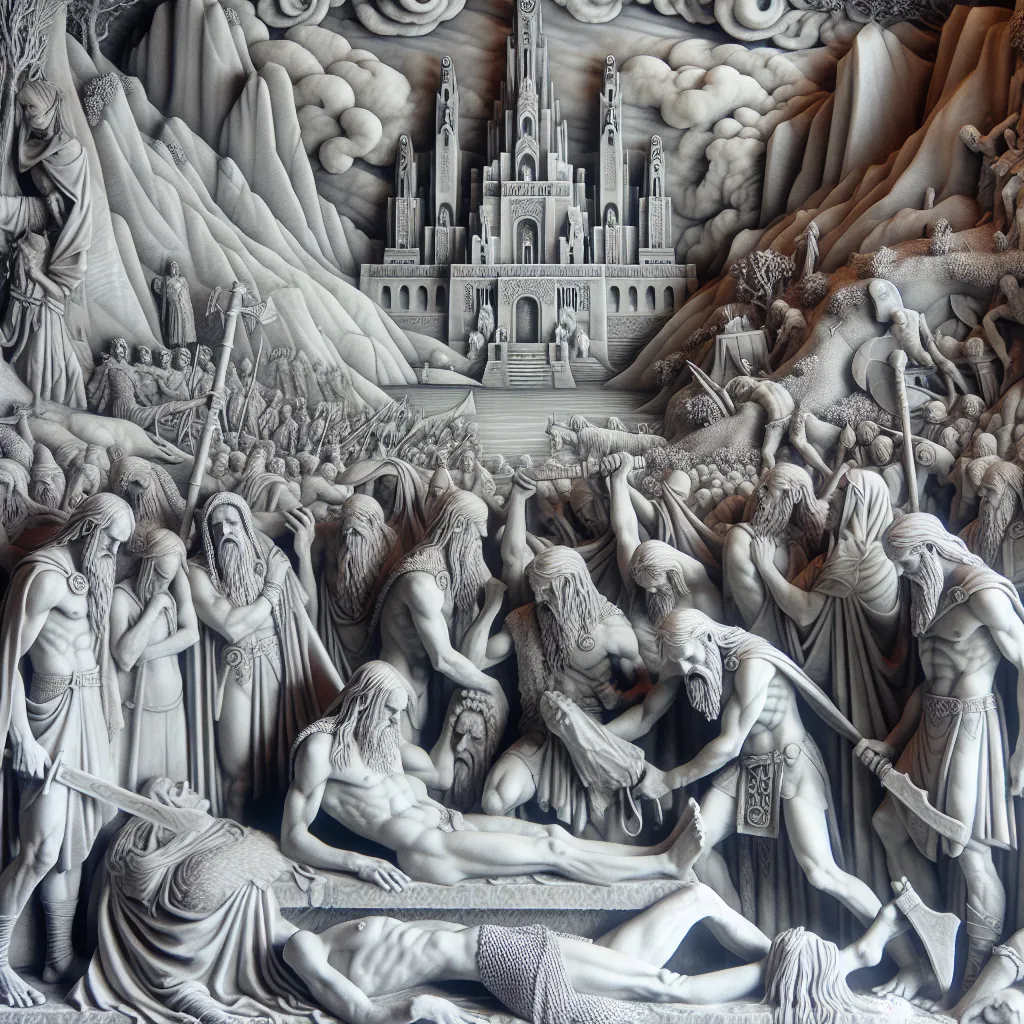
- Published on
- Authors

- Name
- You
Norse Funerary Practices: Death, Burial, and the Afterlife
The Norse cosmos was a rich tapestry of beliefs and practices, woven with the threads of everyday life and the spectral realm beyond death. The Norse funerary rites were not merely about the interment of the deceased, but a profoundly complex ritual designed to secure the deceased’s passage to the afterlife. This article explores the intricate layers of Norse funerary practices, from death to burial, and the soul’s journey into the beyond.
The Preparations for Death
Upon the approach of death, Norse kinsmen and women began preparations that would ease the passage of their loved ones into the afterlife. These preparations included:
- Rite of Passage: Conversations and ceremonies that served to prepare the dying individual.
- Antimagic Measures: Protection against malevolent spirits that could interfere with the soul's journey.
- Wealth Distribution: Redistribution of wealth and belongings, signifying the deceased's social status and ensuring their needs were met in the afterlife.
The Burial Rituals
Funeral Pyres and Burial Mounds
The funeral rituals varied widely across the Norse world, but certain elements were universally observed:
| Element | Description |
|---|---|
| Ship Burials | High-status individuals were often buried in a ship, symbolizing their journey. |
| Cremation | A common practice that symbolized the release of the soul from the material body. |
| Burial Mounds | Mounds covering graves, often adorned with stones and monuments. |
| Grave Goods | Personal belongings, weapons, and even sacrificed animals placed with the body. |
Symbolism in Burial Practices
- Ships as Soul Vessels: Ships were seen as carriers of the soul to the afterlife.
- Cremation vs. Inhumation: Both practices held distinct social and religious significance.
- Grave Goods and Their Meanings: Items placed with the dead conveyed status and prepared the soul for the afterlife's demands.
Beliefs About the Afterlife
The Norse afterlife was as diverse as their funerary customs, with several possible destinations for the soul:
| Realm | Guardian Deity | Characteristics |
|---|---|---|
| Valhalla | Odin | The hall of slain warriors, where heroes killed in battle feasted until Ragnarok. |
| Folkvangr | Freyja | A field where half of those who died in combat were taken by Freyja to enjoy eternal peace. |
| Helheim | Hel | The realm of the dead for those who did not die heroically, ruled by the half-dead, half-living Hel. |
| Ran’s Hall | Ran, the sea goddess | A place where those who died at sea found their eternal rest. |
Mystical Wisdom and Modern Science
Contemporary archaeology and anthropology provide new insights into these ancient practices. Examining burial sites, artifacts, and ancient texts reveals:
- Ritualistic Significance: Understanding the anthropological significance of Norse rituals in their social context.
- DNA Analysis: Modern DNA techniques reveal familial relationships and health status among the Norse.
- Astronomical Alignments: Discovering burial sites aligned with celestial events, hinting at the cosmological beliefs influencing funerary practices.
Conclusion
Norse funerary practices are a fascinating glimpse into a society where the boundaries between the living world and the afterlife were intimately connected. These rituals, while deeply spiritual, were also practical, showcasing a profound understanding of death as both an end and a transcendent journey.
As we continue to uncover and understand these ancient practices through the lens of both ancient mysticism and modern science, we can appreciate the depth of Norse culture and their timeless approach to life, death, and what lies beyond.
By exploring these practices, we connect not only to the ancient Norse psyche but also to our own modern-day reflections on mortality and the eternal quest for understanding the afterlife.
